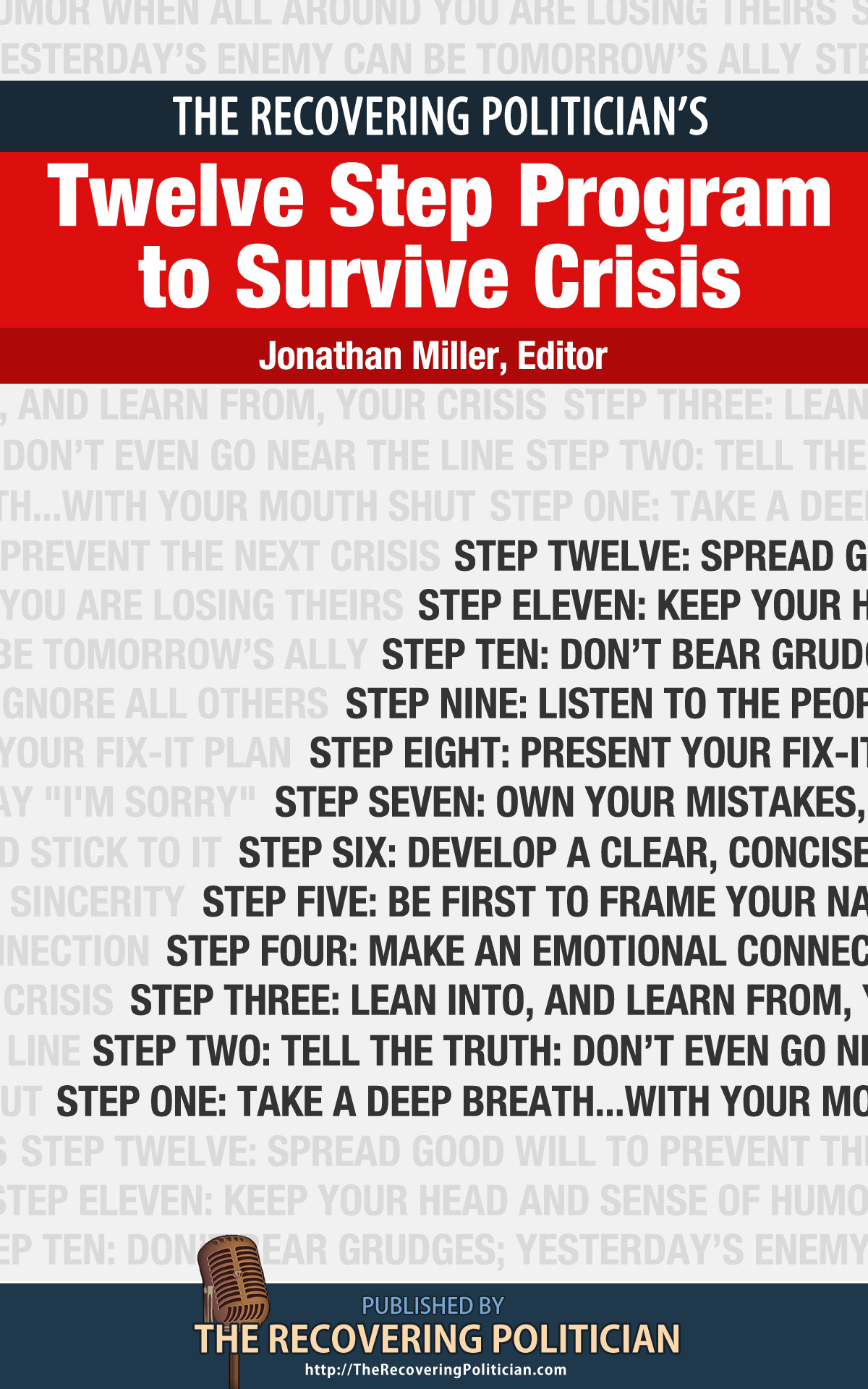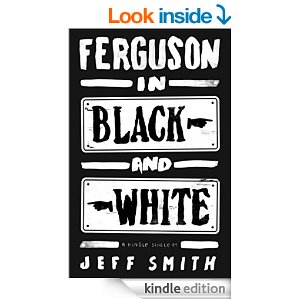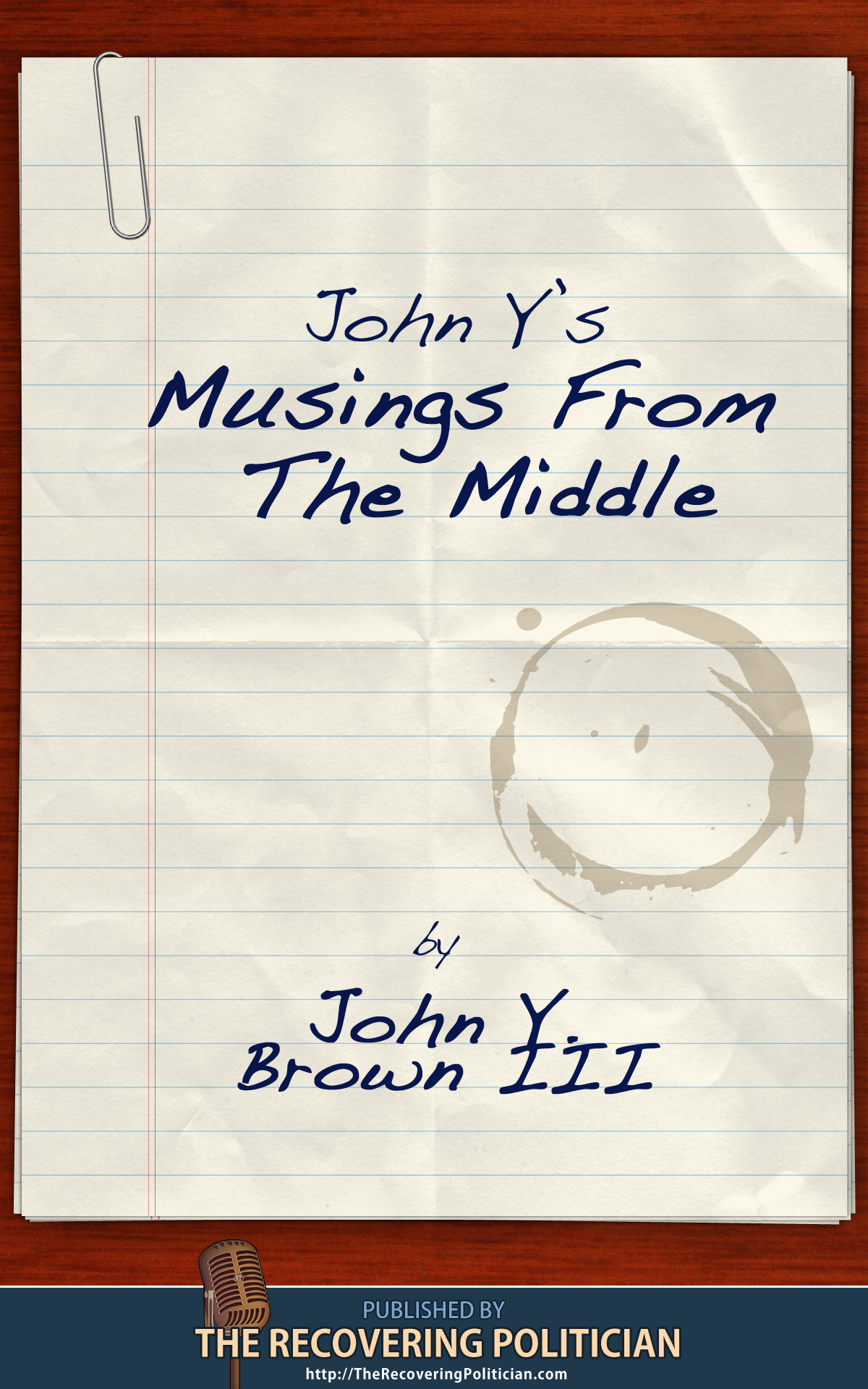By John Y. Brown III, on Tue Aug 19, 2014 at 12:00 PM ET
By Erica and Matt Chua, on Tue Aug 19, 2014 at 8:30 AM ET 
Vietnam. For a 20-something American the name signifies a war more than a place. I have seen the movies, but have little understanding of the place and conflict. I know we went due to the Domino Theory, but I never grasped how a theory became a war. I know we fought and lost.
I headed off to Vietnam without doing any research. It was only recently that I had learned where Vietnam was on a map. I heard Vietnam was a fast developing country with factories producing for the West. It sounded like many places I had gone, but on arrival it gave me some shock and awe.
When I arrived from Singapore I was surprised by how large, clean and new the airport was. It could have been in any developed country and was nicer than most American airports. The change was especially stark coming from Singapore’s Budget Terminal which was like the sanatorium in One Flew Over the Cuckoo’s Nest. The only airport hassle was picking up my Vietnam Visa on Arrival from a bureaucratic regime that was holding up 30+ people. Luckily, my visa processed fastest of anyone on my plane and faster than most on a plane that had arrived earlier. After gathering myself and belongings, I exited the airport expecting a crush of touts, taxi services and unsavory individuals that hound tourists in many airports. As I exited I was surprised by the calm and order.
Outside I met a Finnish man who was being hassled by a taxi tout, in hushed tones only good English speakers could comprehend we surmised that we were heading to the same area. I told him I wanted to take the bus and he agreed. The taxi tout told us the last bus had left as service ceased at 6pm. It was 5:55pm. We haggled to an agreeable price and the tout told us to wait in the parking lot. Realizing he may not be allowed to fetch passengers at the door, we obliged and waited. Minutes passed and the tout was nowhere to be seen. Then the bus arrived. With no taxi in sight we boarded the bus which was 94% cheaper than the taxi would have been.
Read the rest of…
Erica and Matt Chua: Vietnam on Arrival
By Jeff Smith, on Mon Aug 18, 2014 at 12:10 PM ET 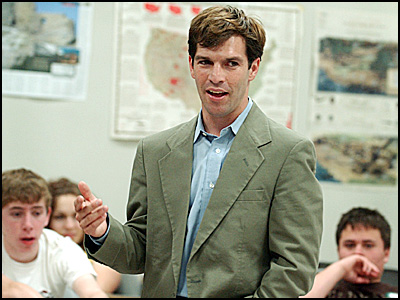
Tomorrow, our very own contributing RP Jeff Smith will be appearing on MSNBC’s “The Cycle” to discuss the tragic situation in Ferguson, Missouri, from his unique perspective as a social scientist who represented the St. Louis region in the Missouri legislature.
Jeff has already emerged as the go-to guy for many national news sources on the continuing crisis.
This morning, the New York Times published his op-ed, “In Ferguson, Black Town, White Power” which answers the perplexing question as to why it appears that a majority African-American population is being governed by mostly white authorities. Here’s an excerpt:
POLITICS, wrote the political scientist Harold Lasswell in 1936, is about “who gets what, when, and how.” If you want to understand the racial power disparities we’ve seen in Ferguson, Mo., understand that it’s not only about black and white. It’s about green.
Back in 1876, the city of St. Louis made a fateful decision. Tired of providing services to the outlying areas, the city cordoned itself off, separating from St. Louis County. It’s a decision the city came to regret. Most Rust Belt cities have bled population since the 1960s, but few have been as badly damaged as St. Louis City, which since 1970 has lost almost as much of its population as Detroit.
This exodus has left a ring of mostly middle-class suburbs around an urban core plagued by entrenched poverty. White flight from the city mostly ended in the 1980s; since then, blacks have left the inner city for suburbs such as Ferguson in the area of St. Louis County known as North County.
Ferguson’s demographics have shifted rapidly: in 1990, it was 74 percent white and 25 percent black; in 2000, 52 percent black and 45 percent white; by 2010, 67 percent black and 29 percent white.
The region’s fragmentation isn’t limited to the odd case of a city shedding its county. St. Louis County contains 90 municipalities, most with their own city hall and police force. Many rely on revenue generated from traffic tickets and related fines. According to a study by the St. Louis nonprofit Better Together, Ferguson receives nearly one-quarter of its revenue from court fees; for some surrounding towns it approaches 50 percent.
Click here for the full piece.
Last week, Jeff wrote an influential piece for The New Republic, “You Can’t Understand Ferguson Without First Understanding These Three Things.” Here’s an excerpt:
You can’t really understand Ferguson—the now-famous St. Louis suburb with a long history of white people sometimes maliciously, sometimes not, imposing their will on black people’s lives—unless you understand Kinloch.
Kinloch, the oldest black town in Missouri, is now essentially a ghost town, but it wasn’t always that way. In fact, it thrived for nearly a century after its founding in the 1890s. Back then, restrictive housing covenants prohibited the direct sale of property to blacks, so a white real estate firm purchased parcels of land, marked them up over 100 percent, and resold them to blacks.” One advertisement noted, “The good colored people of South Kinloch Park have built themselves a little city of which they have a right to be proud. More than a hundred homes, three churches and a splendid public school have been built in a few years.”
The turn of the century was a heady time for the bustling little town. The Wright Brothers visited Kinloch Airfield in one of their earliest tours, and the airfield hosted an event at which Theodore Roosevelt took the maiden presidential airplane flight, which lasted approximately three minutes. Kinloch Airfield was home to the first control tower, the first aerial photo, and the first airmail shipped by a young pilot named Charles Lindbergh. A streetcar line ran through Ferguson, helping Kinloch residents travel to jobs throughout the region, and perhaps more importantly, exposing many whites to Kinloch as they passed through. Despite the region’s decidedly Southern folkways and segregated housing arrangements, blacks and whites rode the streetcars as equals. Kinloch itself was also notable for its relative enlightenment; despite school segregation, it became the first Missouri community to elect a black man to its school board.
All that began to change in 1938. A second black man sought election to the school board in the district which had a narrow black majority—whites inhabited the north and blacks the south—and whites responded by attempting to split the school district. It failed: 415 blacks in the south voted unanimously against the effort, while 215 whites in the north all supported it. So to get around the small problem of losing democratically, whites in the northern half of Kinloch immediately formed a new municipality called Berkeley, and a rare Missouri effort at integrated governance ended. Kinloch continued to thrive for the next several decades as a small nearly all-black town of churches, shops, community centers, and tidy homes.
In the 1980s, the airport—long since been renamed Lambert International Airport—began snatching up property to build an additional runway. From 1990 to 2000, Kinloch shed over 80 percent of its population, and as the community fabric frayed, it was increasingly plagued by crime and disorder.
Construction on airport expansion, which cost well over a billion dollars and involved 550 companies, began in 2001. Unfortunately, two other things happened that year: American Airlines bought TWA, and 9/11. Which means that the airport is dramatically underutilized now; a senior airport official told me Lambert could easily handle twice the traffic it currently gets.
Meanwhile, many of the residents displaced by this wasteful construction project have ended up in Ferguson—specifically, in Canfield Green, the apartment complex on whose grounds Michael Brown tragically died.
Click here for the full piece.
Jeff has also been burning up the Twitter feed (@JeffSmithMO) with his brilliant perspective on each day’s events. Click here to read a “Storify” of his last few days of tweeting.
By John Y. Brown III, on Mon Aug 18, 2014 at 12:00 PM ET 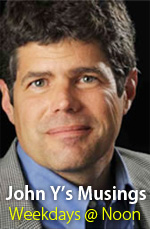 Remember Julie Andrews memorable song, “These are a few of my favorite things” where she taught us…. Remember Julie Andrews memorable song, “These are a few of my favorite things” where she taught us….
“When the dog bites
When the bee stings
When I’m feeling sad
I simply remember my favorite things
And then I don’t feel so bad”
But what if the “Favorite things” in the song, don’t really do it for you?
I mean, remember? The favorite things are things like
“Cream colored ponies” and “whiskers on kittens,”
“Bright copper kettles” and “Brown paper packages tied up with strings”
I never told anyone but none of those were on my “favorite things list.” Not one.
Now that I am older I think there must have been a little more going on with Julie Andrews back then that was lifting her mood than just thinking about cream colored ponies. After all, the song came out in the mid 1960s.
Regardless of the lyrics, I do love the Al Jarreau version of this song. And listening to it is one of my favorite things. And still works.
By Jeff Smith, on Mon Aug 18, 2014 at 10:00 AM ET
By Saul Kaplan, on Mon Aug 18, 2014 at 8:30 AM ET 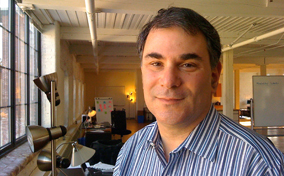 I would like to go to the new $1.2 billion Cowboys Stadium in Texas to watch the movie The Matrix. I have no interest in watching a football game there. Full disclosure, I have never liked the Dallas Cowboys. I think it has something to do with a mean cousin who loved them and harassed me about it in grade school. I would like to go to the new $1.2 billion Cowboys Stadium in Texas to watch the movie The Matrix. I have no interest in watching a football game there. Full disclosure, I have never liked the Dallas Cowboys. I think it has something to do with a mean cousin who loved them and harassed me about it in grade school.
In a classic egomaniacal move Cowboy’s owner Jerry Jones ordered a ginormous jumbotron that hangs 90 ft above the playing field spanning from one twenty yard line to the other, right in the likely flight path of many punts.
How big is this oversized HDTV? Its display screens are 159 by 72 feet and it weighs 432 tons. Talk about surround sound.
And talk about a design flaw. Their user experience expert must have been so focused on delivering an incredible experience for the fans attending the game that they completely forgot that the stadium was going to host actual football games.
How big a design error is this? You judge.
Christopher Moore, an Assistant Professor of Physics at Longwood University in Farmville, VA, blogged about the physics of punting on ilovephysics.com:
” A study in 1985 of 238 punts made by 24 different NFL punters found that punters typically don’t punt for maximum distance, but to balance distance with hang time. The study found that on average, NFL punters kick the ball at an angle of 57 degrees with an average speed of 60 mph. With these parameters, a NFL punt would have an average height of about 90 feet, which is exactly the height off the ground of the Cowboy’s scoreboard. Air resistance would probably decrease this number 10-15%, though. More important, though, were parameters for “elite” kicks. An elite kicker can boot the ball with speeds up to 70 mph. At the same average angle, that results in a height over 120 feet.”
The physics of kicking a football suggest that the jumbotron will be hit a lot. This is a huge design screw up and Jerry Jones should be forced to move the HDTV screen into his home where I am sure it would easily fit without getting in the way.
But no, this is the NFL where team owners rule the roost. Jerry Jones petitioned (probably more like told) NFL Commissioner Roger Goodell that a new rule would have to be created to accommodate punts that will inevitably hit the video screen. And it was done. The NFL announced the following new rule:
“If a ball in play strikes a video board, guide wire, sky cam or any other object, the ball will be dead immediately, and the down will be replayed at the previous spot”
That the rule will come into play is no longer hypothetical. In the third quarter of the first exhibition game played in the new venue between the Cowboys and the Titans, the backup punter for Tennessee, A.J. Trapasso, hit the jumbotron squarely and the ball bounced straight down. The punt was ruled dead and the down replayed.
During warm-ups before the game Trapasso had hit the screen monstrosity three times and the Titan’s starting punter, Craig Hentrich had nailed it a dozen times.
You would think they could have figured this out during the design process. There is no room for ego in good design and I still don’t like the Dallas Cowboys.
By John Y. Brown III, on Fri Aug 15, 2014 at 12:00 PM ET  I watched the Matrix for the first time last night.
I told my son I had trouble following what….what was happening….and uh…um….what it was about …and meant. But otherwise liked the movie.
He said, although it was complicated,… he understood most of it. But suggested I “Google it” for an explanation instead of him explaining it to me.
I didn’t tell him but I already had “Googled it” and still didn’t understand it.
My main take away is that Keanu Reeves must really know Kung -Fu to have played the part. And that I would not have found the movie so confusing if there had been more Kung-Fu scenes.
And the final scene, where Reeves character stops the bullets, was cool –whatever it meant. And now I get the reference spoofing that scene in Zoolander.
By Julie Rath, on Fri Aug 15, 2014 at 8:30 AM ET 
As I assume your plans this summer may involve some combination of burger-eating, alcohol-imbibing, and grass-sitting, I’ve decided to share some stain removal tips to help keep your holiday fresh and clean. Below are 5 main offenders and what to do if you have a run-in with them:
1) Red wine: dab with white wine.
2) Grease: add a can of Coke to washing machine.
3) Sweat: apply a paste of 3 aspirin tablets mixed with two tablespoons of warm water and let sit for 1 hour.
4) Ketchup: (this one’s a little more complicated) a. working from back of stain, flush with cold water; b. pretreat with liquid laundry detergent and let sit for a few minutes; c. rinse well; d. apply white vinegar with sponge and rinse well; e. repeat steps b-d a few times until you’ve removed as much as you think you can; f. pretreat with a pre-wash stain remover and launder; g. if stain persists, rub with liquid laundry detergent and soak in warm water up to 30 min; h. launder again.
5) Grass: soak in vinegar for 30 min then machine wash.
-Content provided by Rath & Co. Men’s Style Consulting. Read more: http://rathandco.com/2014/07/stain-removal-hacks/#ixzz38ftCqpUI
By Matt Ranen, on Thu Aug 14, 2014 at 1:30 PM ET  Public debates about policy often focus on trying to explain why a particular approach will make the ‘whole system’ work better. Consider Obamacare: it’s supposed to insure the uninsured, improve the quality of care, and ‘bend the cost curve’ to reduce the costs. Or Education reform: the online MOOC is supposed to radically reduce the costs of education while scaling the very best teachers by orders of magnitude. It’s become almost a necessity of public debate—at least in the US—to assert that a big idea reform proposal is a ‘win-win.’ And to stand in opposition to this best-of-all possible worlds means you are either too dumb to understand or simply dishonest. Public debates about policy often focus on trying to explain why a particular approach will make the ‘whole system’ work better. Consider Obamacare: it’s supposed to insure the uninsured, improve the quality of care, and ‘bend the cost curve’ to reduce the costs. Or Education reform: the online MOOC is supposed to radically reduce the costs of education while scaling the very best teachers by orders of magnitude. It’s become almost a necessity of public debate—at least in the US—to assert that a big idea reform proposal is a ‘win-win.’ And to stand in opposition to this best-of-all possible worlds means you are either too dumb to understand or simply dishonest.
Would that it were so. This kind of thinking can be popular on the surface and it certainly makes for ‘provocative’ op-eds that garner lots of hits on newspaper websites. But it doesn’t serve the public interest, isn’t good for business-government relations, and is not a good way to work with other stakeholders that will have to be involved. Ironically, it gets in the way of both the technical and social innovation it is trying to foster.
Here’s why. Almost every big public policy debate is ultimately an argument about the aspirations and visions we have and how we want our society to ‘look’. Implicit in this is a decision about the tradeoffs we are willing to make to get there and the effective winners and losers of policy decisions. The win-win discourse tries to push what are in fact deep disagreements about this into the background where no one has to look too closely.
We get the motivation. It’s certainly comforting and easier to claim that everyone can have better, cheaper healthcare distributed more fairly and no one will lose anything in the process. But look beneath the hood and the supposed cost savings in the short and medium term depend heavily on cutting Medicare reimbursements to doctors. And that doesn’t happen: every year, like clockwork, Congress postpones those cuts. So we don’t actually face the trade-offs, but rather, push them off into some unspecified future.
Or elsewhere, in the current debate over Internet traffic rules: it’s much easier to assert that net neutrality makes the Internet better on all dimensions—more open, more free, more secure, speedier, and more fair to newcomers—until someone points out that they didn’t have sufficient bandwidth to get the SuperBowl on their iPad, watch the opening episode of Game of Thrones without disruption, or get high quality FaceTime streaming with their grandma, even though they paid for this. If only we could have our broadband cake and eat it too.
It takes courage on the part of business leaders and public policy makers to put these kinds of trade-offs in the foreground. But here’s the twist — we think this would actually be very good news for innovation. Figuring out how to compensate or reduce the pain to losers is actually one of the most significant drivers of innovation because it forces real choices from which new value springs. If Comcast is simply evil and Google is simply good, then it feels like a win-win to force Comcast into being a dumb pipe for Google content. But dumb pipe companies won’t (indeed, can’t) invest very much in new infrastructure and new services. So a better solution might also include incentives or requirements for the ‘good’ companies to deliver their content and services with radically greater efficiency: using 1/10 or 1/100 of today’s bandwidth—which in turn would open up the remainder for new applications from brand new content innovators.
Putting trade-offs in the foreground doesn’t offer the cheap thrill of demonizing certain companies in the ecosystem — the health insurers, the broadband providers, the for-profit education companies, and so on. But it’s more honest and ultimately better for innovation and growth. And it may actually lead to a more stable profit margin over the long run for those companies who are wise enough to not create a desperate, and possibly angry, set of losers later on.
By John Y. Brown III, on Thu Aug 14, 2014 at 12:00 PM ET  There is nothing noble about how Phillip Seymour Hoffman died. Nothing courageous; nothing thoughtful; nothing exemplifying caring for those who relied on him. And there was plenty to suggest deep pain, deceit, secrecy, …and recklessness—all flowing effortlessly from a piercing drug addiction. There is nothing noble about how Phillip Seymour Hoffman died. Nothing courageous; nothing thoughtful; nothing exemplifying caring for those who relied on him. And there was plenty to suggest deep pain, deceit, secrecy, …and recklessness—all flowing effortlessly from a piercing drug addiction.
Professionally, Hoffman left an extraordinary legacy of achievement. But in his personal life, his legacy to his children was cut brutally and inexplicably short. Yet his will, leaving direction but limited resources to his three children showed, in my opinion, that he loved his children devotedly and cared deeply and thoughtfully about their well-being.
And proved again that love is better measured in time and thoughtfulness than dollars and cents.
One can hope, ironically, that this legacy Phillip Seymour Hoffman left to his children in death, may help in some important way to protect the children he loved from meeting the same tragic end that Hoffman himself did.
|
The Recovering Politician Bookstore
|












